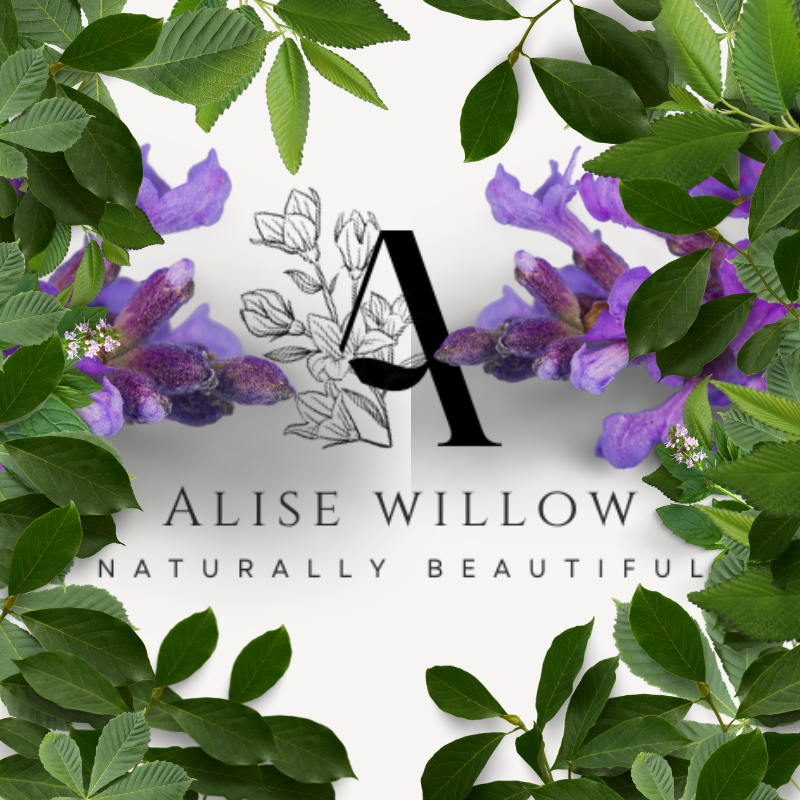Introduction
That chic leather purse you’re eyeing? It might be fashionable, but the truth behind it is anything but. Many handbags and purses are made from materials that not only exploit animals but also wreak havoc on the environment and human health. If that doesn’t make you clutch your pearls (or, preferably, your ethically sourced, vegan leather clutch), then let’s break it down further.
What’s in Non-Vegan Bags? (Hint: It’s More Than Just ‘Luxury’)
1. Leather (Cow, Sheep, Goat, Pig, and Even Kangaroo)
- Leather comes from the hides of various animals, which are processed using toxic chemicals such as chromium, formaldehyde, and arsenic (Hahn, 2019). These chemicals can leach into water supplies, causing environmental and health issues.
- The leather industry is responsible for vast deforestation, especially in South America, where the Amazon rainforest is being cleared for cattle farming (Greenpeace, 2020).
- Workers in tanneries often suffer from skin conditions and respiratory diseases due to prolonged exposure to these chemicals (World Health Organization [WHO], 2021).
2. Exotic Skins (Alligator, Crocodile, Ostrich, Snake, and Stingray)
- Animals bred for their skins often endure extreme suffering. Crocodiles, for example, are confined in small tanks before being electrocuted or bludgeoned (PETA, 2022).
- The illegal wildlife trade also flourishes under the guise of fashion, leading to species depletion (TRAFFIC, 2021).
3. Fur and Wool Accents
- Some high-end purses feature fur trims from minks, foxes, and rabbits, which are raised in brutal fur farms (Vegan Society, 2020).
- Wool, while seemingly harmless, is often obtained from sheep subjected to cruel shearing processes that leave them injured (Compassion in World Farming, 2021).
How These Materials Wreak Havoc on the Planet and Its Inhabitants
- Environmental Devastation: The tanning of leather contributes to water pollution, while methane emissions from livestock accelerate climate change (United Nations Environment Programme [UNEP], 2019).
- Human Health Impact: Tanneries release carcinogenic substances, leading to higher cancer rates among workers and surrounding communities (WHO, 2021).
- Animal Cruelty: The methods used to obtain leather and fur are grotesquely inhumane, with animals being skinned alive or slaughtered prematurely (PETA, 2022).
The Bright Side: Health Benefits of Choosing Vegan Bags
Ditching animal-based materials isn’t just an ethical win—it’s a health-conscious one too. Here’s why:
- Avoiding Toxic Chemical Exposure: Vegan materials like cork, plant-based leather (such as cactus or mushroom leather), and polyurethane (PU) don’t require heavy metal tanning processes (Hahn, 2019).
- Reducing Allergic Reactions: Animal-derived leather can cause skin irritation due to the chemicals used in processing (Dermatology Association, 2020).
- Better Air Quality: Choosing vegan options reduces industrial emissions that contribute to respiratory illnesses (UNEP, 2019).
- Eco-Friendlier Production: Plant-based leathers require fewer resources and create less pollution (Sustainable Apparel Coalition, 2021).
How to Shop Smart: Choosing Authentic Vegan Bags
- Check Labels & Certifications: Look for logos from organizations like PETA-Approved Vegan, Vegan Society, and Global Organic Textile Standard (GOTS).
- Avoid Misleading Terms: “Genuine Leather” means animal-based, while “Vegan Leather” indicates synthetic or plant-based materials.
- Research the Brand: Ethical brands are transparent about their materials and sustainability efforts. Read reviews and check company websites.
- Support Ethical Companies: Brands like Matt & Nat, Stella McCartney, and Will’s Vegan Store prioritize cruelty-free fashion.
Conclusion
Your fashion choices matter. While that cowhide handbag may seem luxurious, its impact on the planet, animals, and your health is anything but. Choosing vegan bags isn’t just about looking good—it’s about doing good. So, next time you’re in the market for a new purse, make sure it’s one that aligns with both style and sustainability.
Apply What You Learn in Your Life Now
Imagine a purse that’s as fashionable as it is eco-friendly, and totally guilt-free. That’s what our vegan purses offer: a perfect blend of style and sustainability that you can wear every day. Ready to make the switch? Click here to explore our collection and discover the perfect purse to fit your lifestyle!
🌿 Join the Wellness Insider Circle — Free VIP Content, Exclusive Discounts & Monthly Boosts 🌿
Subscribe for free to receive the latest blog updates, a bonus lesson that expands on themes from our courses, eGuides, and eBooks—but isn’t included in any of them (because who doesn’t love exclusive VIP content?)—plus 15% off your next wellness product and a monthly check-in email to support your path (like a warm, encouraging tap on the shoulder—minus the awkward contact). No fees—just insight, encouragement, and holistic guidance delivered with care (and zero pressure sales pitches or weird infomercial vibes). Click here to subscribe for free.
Quiz: How Well Do You Understand Non-Vegan Bags & Purses?
1. What is a major issue with leather bags?
a. They are difficult to clean.
b. They contribute to deforestation and chemical pollution.
c. They are made from synthetic materials.
d. They are only produced in one country.
2. Which chemical is commonly used in the leather tanning process?
a. Oxygen
b. Chromium
c. Salt
d. Water
3. How does the leather industry contribute to deforestation?
a. By growing crops to feed cattle.
b. By clearing land for cattle farming.
c. By planting trees in the Amazon.
d. By building tanneries in forests.
4. What happens to workers in tanneries?
a. They often get skin conditions and respiratory diseases.
b. They receive extensive medical benefits.
c. They work with only organic materials.
d. They are required to wear protective suits at all times.
5. Which animals are commonly used for exotic skins in fashion?
a. Kangaroo and Snakes
b. Dogs and Cats
c. Lions and Tigers
d. Horses and Cows
6. What is a key issue with fur used in handbags?
a. It is not biodegradable.
b. It is typically sourced from animals raised in brutal conditions.
c. It is expensive to produce.
d. It has a strong odor.
7. What environmental problem is associated with leather tanning?
a. Depletion of freshwater supplies
b. Water pollution
c. Air pollution
d. Noise pollution
8. How do vegan materials like cork and plant-based leather benefit health?
a. They contain no toxic chemicals.
b. They are cheaper to produce.
c. They require less labor.
d. They are more durable than animal-based materials.
9. What does the label "Genuine Leather" indicate?
a. It is made from synthetic materials.
b. It is animal-based.
c. It is vegan-friendly.
d. It contains no harmful chemicals.
10. Which of the following brands is known for offering ethical vegan bags?
a. Prada
b. Matt & Nat
c. Gucci
d. Louis Vuitton
Answer Key
- b. They contribute to deforestation and chemical pollution.
- b. Chromium
- b. By clearing land for cattle farming.
- a. They often get skin conditions and respiratory diseases.
- a. Kangaroo and Snakes
- b. It is typically sourced from animals raised in brutal conditions.
- b. Water pollution
- a. They contain no toxic chemicals.
- b. It is animal-based.
- b. Matt & Nat
Nourish & Reflect
1. What part of this article stood out most to you—and why? (AKA: What had you nodding like “Whew, that’s me”?)
2. Where in your life could you apply this wisdom today? (Your job? Your kitchen? That one group chat that tests your patience?)
3. What would change if you committed to this for a week? (Yes, just one week. We’re not building Rome, just emotional stamina.)
4. After applying this wisdom, what changes or benefits did you notice in your life? Were there any challenges or setbacks you faced? (Tell the truth: Did it go smooth, or did life throw a plot twist in the middle?)
5. How do you think you can overcome the challenges or setbacks you experienced? What support or tools might help you? (Access your inner life coach — yes, the one who drinks water, goes to bed on time, and remembers passwords. What would future-you suggest?)
6. Do you have any questions or thoughts about this article that you'd like to discuss further? (Or is your brain like, “Wait—can we talk about that one part again?”)
We’d love to hear from you! Your reflections aren’t just valuable—they’re powerful—like grandma’s advice that didn’t make sense until it did. Drop an insight (or three) in the comments below. What clicked? What cracked you open? What are you side-eyeing but lowkey know you needed to hear? Your words might be the gentle nudge someone else needs today—and hey, sharing is part of the healing too.
Share Your Thoughts—We’re Listening!
We want to hear from you! Whether you’re a devoted blog reader or just popped in while hiding from laundry duty, your thoughts help shape what we create next. Tell us what you loved, what made you think, or even what made you chuckle awkwardly at 2 a.m. It only takes a minute—quicker than brewing your morning herbal tea (and with fewer dishes). Click here to share your thoughts—because we’re all ears, hearts, and maybe a little chamomile. Your voice matters to us!
Disclaimer
This article and other content on this site are for educational and informational purposes only and are not intended to diagnose, treat, cure, or prevent any condition. Statements made on this site have not been evaluated by the Food and Drug Administration. Always consult with a qualified healthcare provider before making any wellness decisions. Please read our Disclaimer for full details.
Some materials on this site may include optional scriptural content and biblical insights, presented for educational and reflective purposes, and grounded in evidence-based research and scripture. Use of this content is voluntary and should be engaged with at your own discretion.
By accessing, reading, or using this content, you acknowledge and accept the terms set forth in our Blog Disclaimer, Health & Wellness Disclaimer, Terms & Conditions, and Shop Policies.
Bibliography
Compassion in World Farming. (2021). The truth about sheep farming and wool production. https://www.ciwf.org.uk
Dermatology Association. (2020). Leather allergies and skin reactions. https://www.dermatologyassociation.org
Greenpeace. (2020). Deforestation in the Amazon: The role of the leather industry. https://www.greenpeace.org
Hahn, E. (2019). Toxic tanning: The hidden dangers of leather production. Sustainable Living Press.
PETA. (2022). The horrors of the leather and fur industries. https://www.peta.org
Sustainable Apparel Coalition. (2021). The future of fashion: Sustainable materials and production. https://www.sustainableapparel.org
TRAFFIC. (2021). The impact of fashion on endangered species. https://www.traffic.org
United Nations Environment Programme. (2019). Fast fashion’s toll on the environment. https://www.unep.org
Vegan Society. (2020). Why vegan fashion matters. https://www.vegansociety.com
World Health Organization. (2021). Health hazards in the leather industry. https://www.who.int




Comments ()